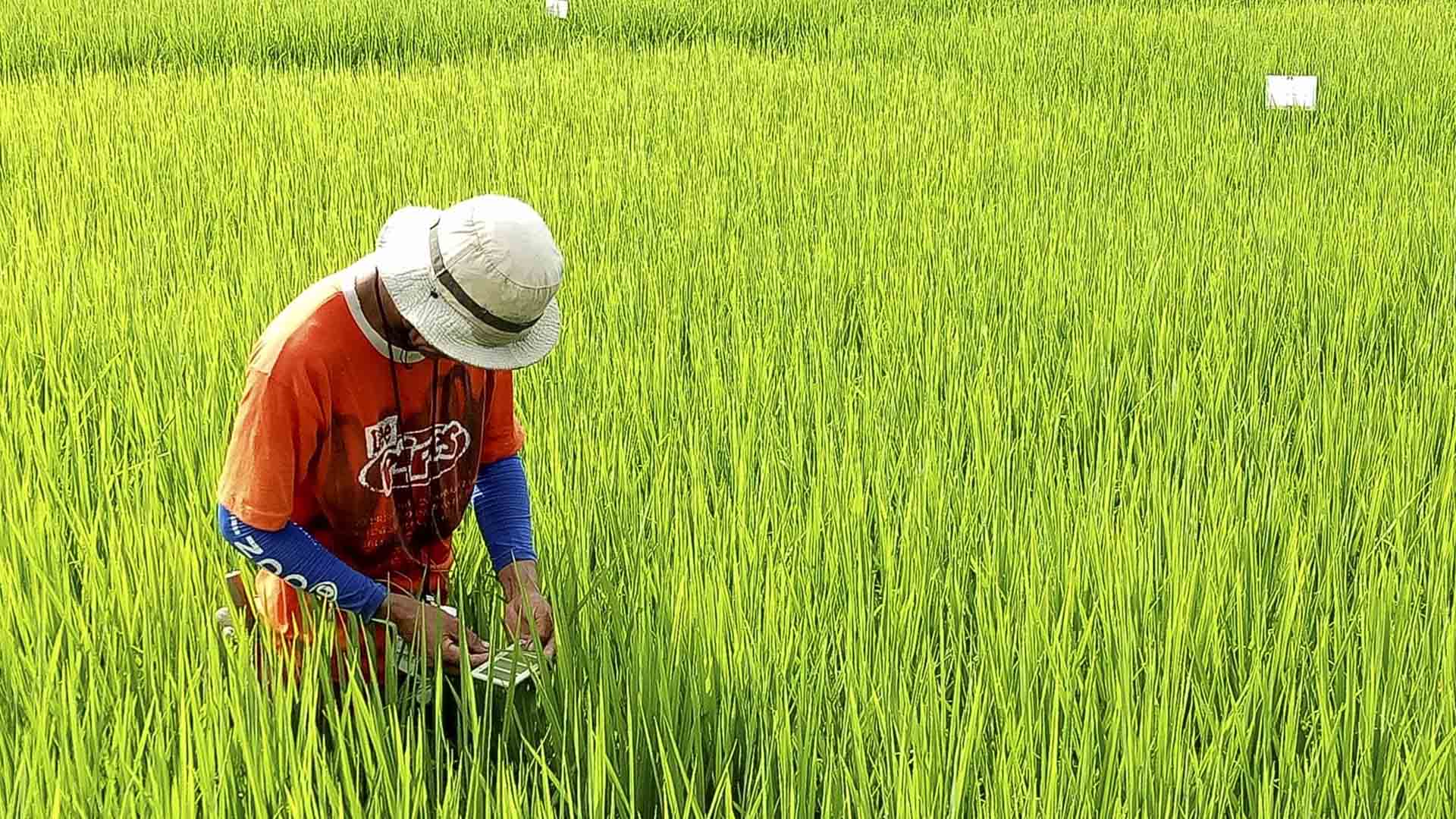Farmers could save P2,000-P4,000 if they complement inorganic fertilizer application with organic, nutrient experts from the Department of Agriculture (DA) said.
Wilfredo B. Collado, a nutrient management expert from DA-Philippine Rice Research Institute, said that farmers must maximize the benefits of natural sources of nutrients.
“One hundred cavans of palay (5t-yield) produces 5t of rice straw. If this is incorporated into the soil and decomposed, it can produce 30kg N, which is equivalent to 1.3 bags (65kg) of urea,” he explained.
Promoted through the “Abonong swak (Swak sa budget, swak sa palay)” campaign launched during the DA-PhilRice Lakbay Palay held on April 6-7, balanced fertilization is disseminated to help cut fertilizer costs in rice production amidst the rising price of the commodity.
Collado added that it is important for farmers to know the specific nutrients and the amount needed by their crop to avoid applying excessively or sparingly.
These can be identified through Minus-One Element Technique, Leaf Color Chart, Leaf Color Computing App, and Rice Crop Management Advisory Service.
Around 500 onsite participants and 15,000 online viewers of the two-day Lakbay Palay were taught organic-inorganic fertilizer combinations to follow based on their budget and target yield. The following recommendations were specified:
To achieve 3-4t/ha, spread and decompose 3-4t of rice straw 30 days after transplanting (DAT). Apply 10 bags of decomposed or air-dried chicken manure, commercial organic fertilizer, or vermicompost at 14 DAT.
For varieties that mature in 100-110 days, apply 1 bag of 14-14-14 at 0-14 DAT or 10-14 days after sowing (DAS); and 1 bag urea and 0.5 bag 0-0-60 at 28-32 DAT or 38-42 DAS.
Varieties maturing in 111-120 days have to be applied with 1 bag of 14-14-14 at 0-14 DAT or 10-14 DAS; 1 bag urea and 0.5 bag 0-0-60 at 32-36 DAT or 48-53 DAS.
Meanwhile, varieties that can be harvested within 121-130 days must be fertilized with 1 bag 14-14-14 at 0-14 DAT or 10-14 DAS; and 1 bag and 0.5 bag 0-0-60 at 36-40 DAT or 58-62 DAS.
Achieving 5-6t/ha entails spreading and decomposing 5-6 tons rice straw 30 DAS; applying 10 bags of decomposed or air-dried chicken manure, commercial organic fertilizer, or vermicompost 14 DAT; and mixing 1-2kg zinc-sulfate in seedbed 7-10 DAS and 2-4kg 14-14-14 at 10-14 DAS.
If varieties used mature in 100-110 days, apply 2 bags of 14-14-14 or 16-20-0 at 0-14 DAT or 10-14 DAS, 1 bag urea at 18-22 DAT or 24-28 DAS; 1 bag urea and 0.5 bag 0-0-60 at 28-32 DAT or 38-42 DAS.
For varieties that mature in 111-120 days, feed crops with 2 bags of 14-14-14 or 16-20-0 at 0-14 DAT or 10-14 DAS, 1 bag urea at 22-26 DAT or 32-36 DAS; and 1 bag urea and 0.5 bag 0-0-60 at 32-36 DAT or 48-53 DAS.
Two bags of 14-14-14 or 16-20-0 at 0-14 DAT or 10-14 DAS, 1 bag urea at 26-31 DAT or 36-40 DAS, and 1 bag urea and 0.5 bag 0-0-60 at 36-40 DAT or 58-62 DAS are also vital elements for varieties maturing in 121-130 days.
Higher target yield of 7-8t/ha needs 7-8t of rice straw applied 30 DAS; 10 bags decomposed or air-dried chicken manure, commercial organic fertilizer, or vermicompost 14 DAT, 1-2kg zinc-sulfate in seedbed 7-10 DAS, and 2-4kg 14-14-14 at 10-14 DAS.
For varieties that mature in 100-110 days, apply 2 bags of 14-14-14 at 0-14 DAT or 10-14 DAS, 2 bags urea at 18-22 DAT or 24-28 DAS; 2 bags urea and 0.5 bag 0-0-60 at 28-32 DAT or 38-42 DAS.
Varieties that can be harvested in 111-120 days must be applied with 2 bags of 14-14-14 at 0-14 DAT or 10-14 DAS, 2 bags urea at 22-26 DAT or 32-36 DAS, and 2 bags urea and 0.5 bag 0-0-60 at 32-36 DAT or 48-53 DAS.
Rice maturing in 121-130 days requires 2 bags of 14-14-14 at 0-14 DAT or 10-14 DAS, 2 bags urea at 26-31 DAT or 36-40 DAS, and 2 bags urea and 0.5 bag 0-0-60 at 36-40 DAT or 58-62 DAS.
“Aside from saving money, organic fertilizer application has a long-term benefit as it improves soil fertility,” Dr. Gina P. Nilo, Bureau of Soils and Water Management (BSWM) assistant director, told participants who received soil test kits from the Bureau.
Lakbay Palay face-to-face participants also toured around DA-PhilRice’s Future Rice, Palayamanan, and Mechanized Model farms where they learned the latest science and technology innovations in rice production.
To learn more about the discussions, view the videos here: https://www.facebook.com/DAPhilRice.







